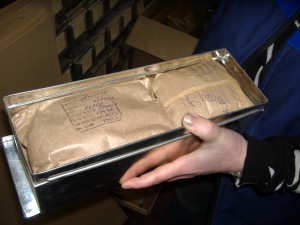Someone called James Sultana emailed us to ask: “Where can get some bush wild tomatoes”.
I was forced to reply in pedant mode:
Could you be a little bit more specific? What do you mean by a “bush
wild tomato”? A wild relative of the tomato? Or some other species
(maybe Australian?) that goes by that name?
Alas, Jim hadn’t entered his email correctly in our contact form, so my reply bounced right back. So, if you’re reading this, Jim, answer the question and we’ll do our best to help. And the rest of you, what might a “bush wild tomato” be?
